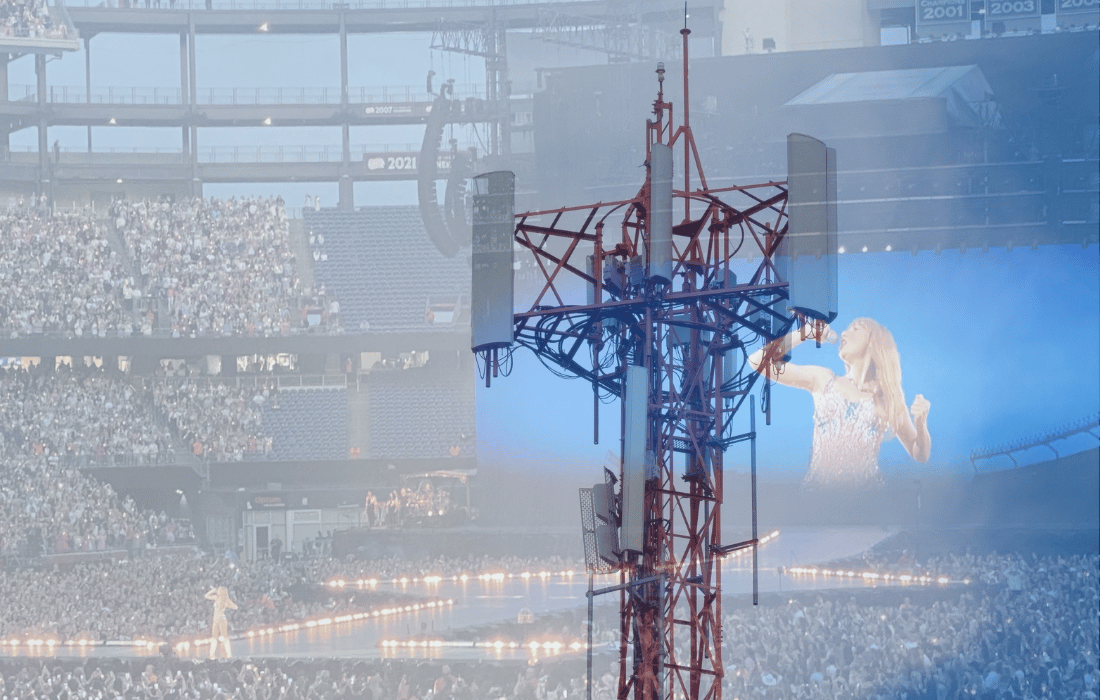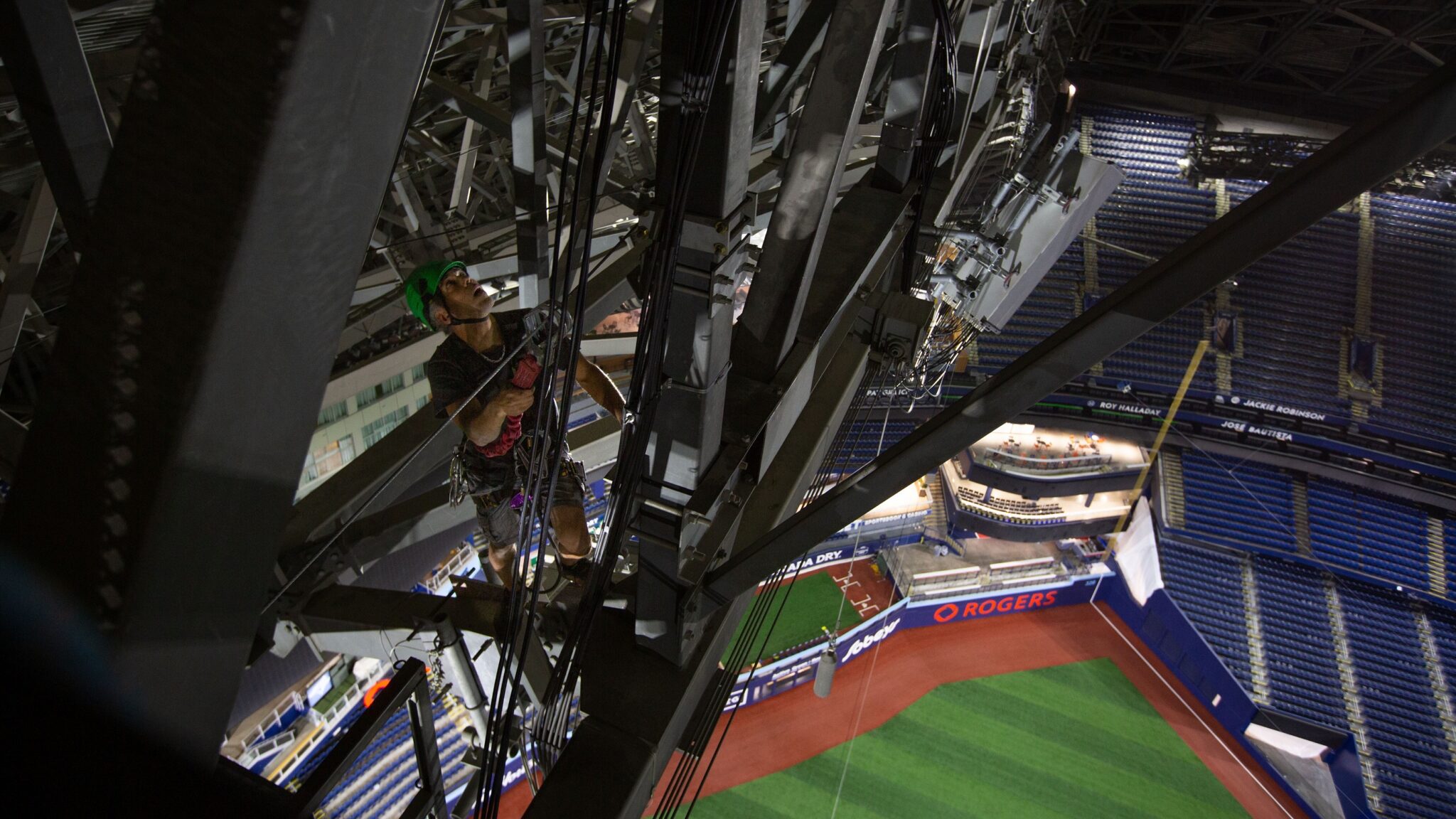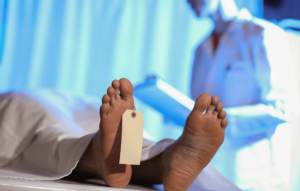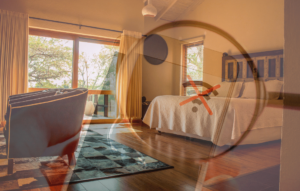Love her or hate her, there’s no denying the cultural impact Taylor Swift brings with her concerts. Her Eras Tour has not only broken records but also pushed venues like Rogers Centre to make significant upgrades—most notably, a massive $8 million investment to enhance their 5G network. This upgrade is designed to support the demands of tens of thousands of fans who flood the stadium, livestreaming and sharing every moment of the show. But while the fan experience gets an upgrade, the question remains: at what cost to our health? With all that new 5G tech comes a surge in EMF exposure, something that most concertgoers are blissfully unaware of.
As technology advances, so do the hidden dangers we face in these high-energy environments. Having recently attended a concert myself, I was struck by how much stimulation we’re exposed to—from the sea of phones to the blinding lights and booming sound. It’s a sensory overload, with unseen risks lurking just beneath the surface. While fans may revel in the enhanced connectivity, the long-term health implications of this invisible EMF bombardment are worth considering.
5G Networks in Stadiums: The Invisible Threat
When Rogers Centre recently upgraded its 5G network to support Taylor Swift’s Eras Tour, it highlighted the growing demand for real-time connectivity at live events. Fans now expect seamless internet service to live stream, upload videos, and share their experience with the world. According to reports, data usage during Swift’s concerts around the world has shattered records—AT&T’s network handled almost 30 terabytes of data during her stop at AT&T Stadium in Texas, while fans at Melbourne’s MCG Stadium used an average of 15 terabytes per night. The numbers are staggering, but what most people don’t realize is the level of EMF radiation required to support this kind of data consumption.
With the latest 5G upgrade, Rogers Centre’s network now has the equivalent of 33 towers in one stadium, each emitting a high level of electromagnetic radiation. This level of concentration, in such a compact space, means that concertgoers are being exposed to unprecedented amounts of EMF, whether they realize it or not.
5G operates at higher frequencies than previous generations of cellular networks, meaning it can penetrate deeper into human tissue. Numerous studies, including those from the Environmental Health Trust and the BioInitiative Report, suggest that EMF radiation can lead to oxidative stress, inflammation, and even long-term cellular damage. The World Health Organization (WHO) has classified EMF radiation as a possible carcinogen, and while research is ongoing, the rise of 5G networks is leading to increased concern among health experts.
Overstimulation in Modern Stadiums: A Recipe for Sensory Overload
While the health risks of EMF radiation are becoming clearer, there’s another aspect of modern stadiums that can’t be ignored: sensory overload. Today’s stadium environments are designed to be stimulating. Between the high-intensity lights, the constant visual displays, the deafening sound systems, and the relentless phone usage, we’re bombarded by stimulation at every turn.
 Think about it: you’re sitting in the middle of a stadium with tens of thousands of people, all of whom are either taking photos, livestreaming, or using their phones to navigate their night. At the same time, massive LED screens are flashing images, light shows are swirling across the stage, and the sound is cranked up to maximum volume. These environments are a far cry from the calm, grounded spaces our bodies were designed to thrive in.
Think about it: you’re sitting in the middle of a stadium with tens of thousands of people, all of whom are either taking photos, livestreaming, or using their phones to navigate their night. At the same time, massive LED screens are flashing images, light shows are swirling across the stage, and the sound is cranked up to maximum volume. These environments are a far cry from the calm, grounded spaces our bodies were designed to thrive in.
While all this is definitely part of the fun, it comes at a cost. Research has shown that excessive sensory stimulation can disrupt the nervous system, leading to increased levels of cortisol (the stress hormone), which in turn affects sleep, mood, and overall health. The lights alone—especially the harsh blue light emitted from both the screens and the stadium’s lighting system—can wreak havoc on your circadian rhythm. That’s why, for me, wearing Ra Optics blue-light blocking glasses during the concert wasn’t just about comfort; it was about protecting my sleep quality for the long drive ahead.
Blue light, a short-wavelength light emitted by artificial sources like screens and LEDs, has been proven to suppress melatonin production, the hormone responsible for regulating sleep. In environments like stadiums, where blue light exposure is high, it’s not uncommon to feel wired and overstimulated long after the concert ends. This is why many people find themselves tossing and turning after a late-night event, despite feeling physically exhausted.
EMF: The Unseen Disruptor of Health
Let’s dive a little deeper into why EMF exposure in stadiums is such a pressing concern. With the introduction of 5G, the strength and density of EMF fields have increased exponentially. In a stadium filled with tens of thousands of cell phones, Wi-Fi routers, and connected devices, you’re essentially swimming in a pool of radiation. While most people may not feel the immediate effects of this exposure, the long-term consequences are harder to dismiss.
One of the key issues with prolonged EMF exposure is its role in oxidative stress. EMF radiation generates free radicals—unstable molecules that can damage cells, proteins, and DNA. This leads to inflammation, which has been linked to a host of chronic diseases, including cancer, heart disease, and neurodegenerative disorders. Oxidative stress can slow down recovery, exacerbate fatigue, and lead to disease.
Several studies have shown the connection between EMF exposure and nervous system disruptions, further underlining the need for protection in environments saturated with electromagnetic radiation. In a place like Rogers Centre, where the 5G network is not just powerful but concentrated, the potential for disruption to your health is magnified.
More on EMF:


Unwrapping the Controversy of Cell Phones in Education Globally
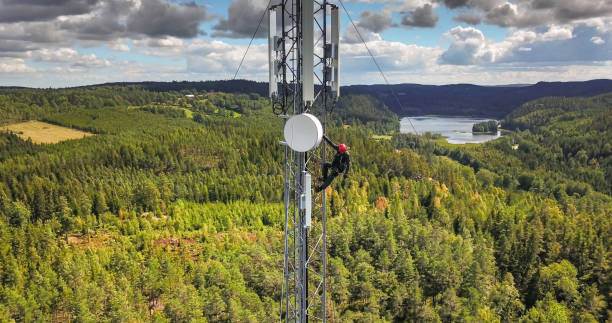
Cosmic Currents and Cable Wires – The EMF Nature-Tech Contrast

My Concert Experience: Staying Protected Amidst the Chaos
Attending the concert recently, I came prepared with my Aires Tech Lifetune Flex worn around my neck, while my wife had her Lifetune Go in her purse. For those unfamiliar, these are personal EMF protection devices that help mitigate the harmful effects of radiation by transforming the electromagnetic waves into a more biologically compatible form. While some may dismiss this as unnecessary, I see it as a crucial defense against the onslaught of EMF we’re exposed to in these environments.
Let’s be real: modern concerts are a blast, but they’re also an EMF and sensory minefield. The stadium is packed with cell phones, routers, and wireless devices all competing for bandwidth, not to mention the infrastructure supporting the 5G network itself. Even though you might be there to enjoy the music and vibe, your body is enduring a different kind of experience—one that involves being bombarded with radiation from every angle.
Throughout the concert, I felt secure knowing I had my Aires Tech protection, and while I couldn’t completely shield myself from the environment, I knew I was reducing the impact on my body. This brings me to an important point: while we can’t eliminate all EMF exposure (especially in places like stadiums), we can take proactive measures to minimize our risk.
Proactive Steps to Protect Yourself from EMF and Overstimulation
Even if you can’t avoid EMF-heavy environments like stadiums, you can take simple, practical steps to protect yourself and limit your exposure. Here are some of the most effective strategies I recommend:

Save 25% on Aires Tech EMF protection with code “kyletothemoon” Wear EMF Protection Devices: Aires Tech has developed portable, wearable devices like the Lifetune Flex and Lifetune Go that help protect you from EMF radiation. These devices use advanced technology to reduce the biological impact of EMF exposure, making them a must-have for concertgoers or anyone spending time in highly charged environments.
Limit Phone Usage: One of the biggest sources of EMF exposure comes from our phones. Try to limit your usage during the event, especially when you’re not actively using your device. Turning off unnecessary features like Bluetooth and Wi-Fi when not in use can also reduce your exposure.

Save 15% on Ra Optics blue blockers with code “tothemoon” Use Blue-Light Blocking Glasses: As I did during the concert, wearing blue-light blocking glasses, can help protect your eyes from the harsh lighting in the stadium and screens. Not only does this reduce eye strain, but it also helps preserve your melatonin levels, improving your sleep quality after the event.
Stay Hydrated and Antioxidant-Rich: EMF exposure increases oxidative stress, which can be countered by drinking plenty of water and consuming antioxidant-rich foods before and after the event. Hydration helps your body manage the stressors of the environment, while antioxidants fight off free radicals that EMF exposure can generate.
 Maximize Airplane Mode: Turn Off Wi-Fi and Bluetooth in public. One of the biggest sources of EMF exposure comes from our phones, especially in crowded environments like stadiums. Whenever possible, switch your phone to airplane mode to disconnect from cellular signals and minimize radiation. If you still need access to certain features, make sure at the very least that both Wi-Fi and Bluetooth are turned off. These functions continuously search for connections, increasing your exposure to EMF. Disabling them when you’re in public spaces can significantly reduce the amount of radiation your body absorbs, providing an easy yet powerful way to protect yourself.
Maximize Airplane Mode: Turn Off Wi-Fi and Bluetooth in public. One of the biggest sources of EMF exposure comes from our phones, especially in crowded environments like stadiums. Whenever possible, switch your phone to airplane mode to disconnect from cellular signals and minimize radiation. If you still need access to certain features, make sure at the very least that both Wi-Fi and Bluetooth are turned off. These functions continuously search for connections, increasing your exposure to EMF. Disabling them when you’re in public spaces can significantly reduce the amount of radiation your body absorbs, providing an easy yet powerful way to protect yourself.Practice Grounding: After the event, take time to reconnect with nature. Whether it’s walking barefoot on the earth or spending time in a park, grounding helps your body discharge built-up EMF and restore balance.
The Unstoppable March of 5G and What It Means for Our Health
The reality is that 5G and other advanced technologies are not going away. Stadiums, cities, and public spaces are becoming more hyperconnected by the day, and with that comes a surge in EMF exposure. While technological advancement is inevitable—and in many ways, beneficial—there’s a growing need for awareness about the health risks associated with living in an increasingly wireless world.
The key isn’t to fear technology but to use it wisely and protect ourselves where we can. We can’t halt the rollout of 5G, nor can we avoid every EMF source in our modern lives. But by taking proactive steps, from wearing EMF protection devices to limiting phone usage in stadiums, we can mitigate the risks and preserve our health.
Conclusion
As stadiums like Rogers Centre continue to adopt advanced 5G networks, it’s important to remain mindful of the potential health risks involved. While we can’t escape EMF exposure entirely, taking proactive measures to protect ourselves, from wearing EMF protection devices to using blue-light blocking glasses, can make a significant difference. These technologies are becoming more prevalent, but we still have the power to take control of our health and make informed decisions about how we interact with them.
So, the next time you attend a concert or large event, consider the invisible disruptors all around you. You can still enjoy the experience while safeguarding your health—it just takes a little preparation. And if you see someone wearing blue-light blocking glasses and an EMF device around their neck, it might just be me, taking care of my health and enjoying the show.

